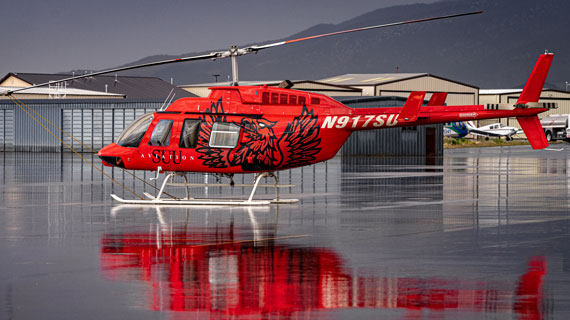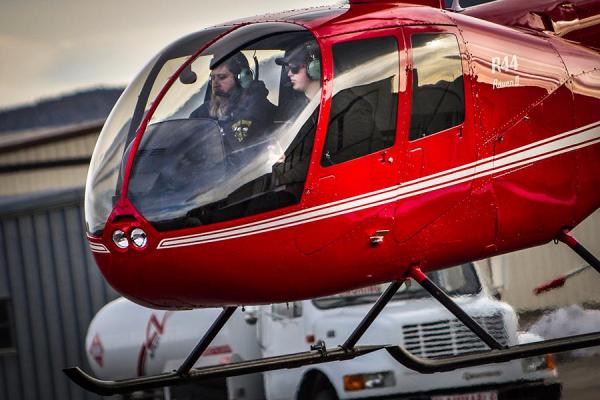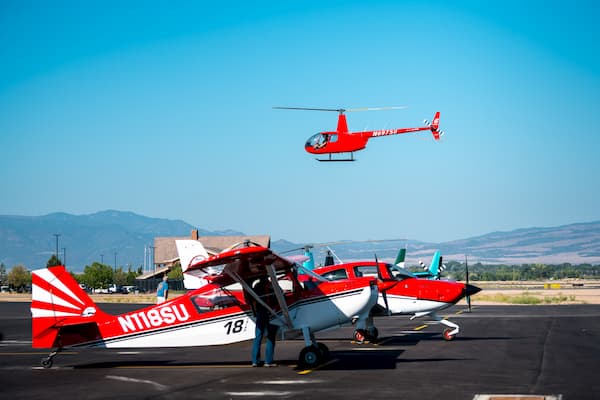Advanced Training for Helicopter Pilots and Why You Need It
Posted: April 08, 2021 | Author: Jaidyn Crookston | Read Time: 11 minutes
 As a current or future helicopter pilot-in-training, you probably know that it’s important to get as much advanced training as possible while in flight school. Even if you know that you need this extra training, you may be less clear on what advanced flight training for helicopter pilots actually entails, and how to get it.
As a current or future helicopter pilot-in-training, you probably know that it’s important to get as much advanced training as possible while in flight school. Even if you know that you need this extra training, you may be less clear on what advanced flight training for helicopter pilots actually entails, and how to get it.
Many students wonder where to get advanced flight training, what kind of training is available, how much this training costs, and how long it will take to complete. These are all great questions, and each of them is answered below, as well as some more you may not have thought of yet.
What Kind of Advanced Flight Training Can You Earn?
First, let’s talk about the different kinds of advanced training that are available to flight students. There are several different areas a helicopter pilot-in-training should be trained in beyond the typical flight school curriculum. Some kinds of advanced training include turbine transition, night vision goggles, external load, high-density altitude, and mountain operations.
What is turbine transition training?
There are basically two types of helicopter engines: piston and turbine. Most training helicopters such as the R44 have a piston engine. This means that all helicopter pilots will learn to instinctively start and operate a piston engine. But piston engines may not be the only kind of engine you come up against in your career as a pilot. In fact, you’ll almost certainly need to fly a large helicopter with a turbine engine, like a Bell, at some point. This means that you’ll need to be trained in starting and operating a turbine engine.
That’s where turbine transition training comes in. You’ll learn to start, operate, and handle a turbine engine safely and instinctively. You’ll have a better chance of being hired as a pilot if you can operate both kinds of engines, and you’ll become a better pilot overall as you learn new skills and important techniques.
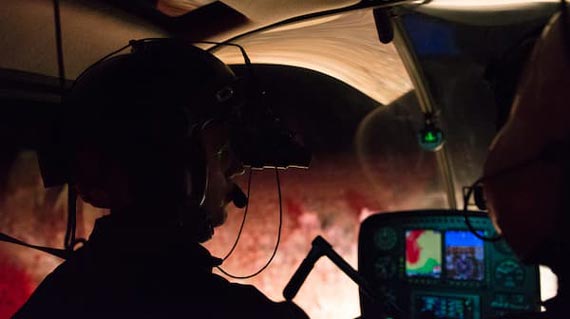 What is night vision goggle training?
What is night vision goggle training?
Night vision goggle training, or NVG training, is learning to fly a helicopter at night while using night vision goggles that are mounted on a helmet. Flying a helicopter in the dark is much more difficult than flying during the day. At night, a pilot really can’t see much outside of the cockpit and runs the risk of getting too close to an object, mountain, building, or other hazards. By wearing night-vision goggles, a pilot is better able to see in the dark and safely pilot the helicopter wherever he or she needs to go.
It may sound easy to just throw on some night vision goggles and fly safely, but it actually takes some practice and training to get used to the goggles and fly the helicopter as safely as possible. That’s why some flight schools or other programs offer NVG training. Potential employers like to see this training on a resume because it lets them know that you are qualified for and have experience flying in the dark. This reduces their risk in hiring you and ensures that you’re able to fly safely at night throughout your career.
What is external load training?
External load training is when a pilot learns to fly a helicopter while carrying something below. This training may also be called long line training, depending on where you train and what exactly you’re being taught. Across different industries, there are many different kinds of external loads a helicopter pilot may need to carry. Some of these external loads include water buckets, building materials, telephone poles, vehicles, and people.
Flying a helicopter always requires a gentle touch and a lot of balance. Because of this, carrying something attached to a helicopter is extremely difficult without the proper training. An external load adds weight to a helicopter and shifts the balance dramatically. If this load moves or swings back and forth, this balance will be constantly shifting and the pilot will need to be constantly vigilant and able to adjust.
Once you receive external load training, however, these adjustments and balance issues will become second nature and won’t impact your ability to fly a helicopter safely. You’ll even be able to set objects down where they need to go without much difficulty, which right now probably sounds like an impossibility.
External load training is helpful for any pilot, but is especially crucial if you want to work as an aerial firefighter, emergency services pilot, cargo pilot, or in any of the other professions that require a pilot to carry an external load. Without this advanced training, it will be quite difficult to get a job doing what you love—carrying heavy objects below a helicopter. Having this training will help you get a job in these areas, especially when competing with a pilot who hasn’t had this external load training.
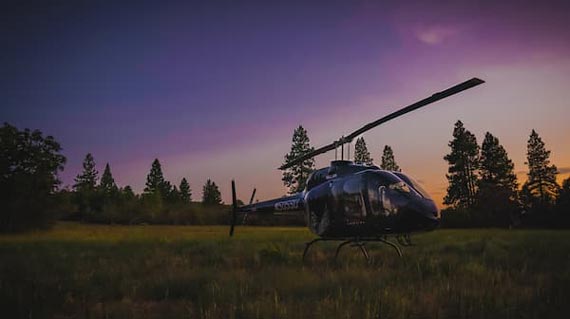 What is high-density altitude training?
What is high-density altitude training?
High-density altitude training is how a pilot learns to properly fly a helicopter in a high altitude environment. The higher altitude you are, the more difficult it is to fly a helicopter. Helicopters simply maneuver and respond differently in high-density altitudes. It takes practice to smoothly and safely fly a helicopter at a high altitude.
One way to get high-density altitude training for no additional cost and as part of the regular flight program is to attend a flight school that is located at a high altitude. This way you’ll automatically be training in a high-density environment. By learning to fly helicopters at high altitude from the very beginning, you’ll be prepared to fly helicopters anywhere in the world, no matter the elevation.
Southern Utah University Aviation is the highest altitude collegiate flight school in the country. If you want to get high-density altitude training, SUU Aviation is the place to be. Not only is the flight school located at a high altitude, but the area is also surrounded by mountains, so you’ll be flying in even higher altitudes very quickly.
What is mountain operations training?
Mountains operations training is exactly what it sounds like. It’s learning to safely and correctly fly a helicopter through mountain ranges and canyons.
Flying a helicopter through a mountain can be very difficult, depending on how much experience you’ve had and the weather conditions. Mountains change rapidly, going from extremely high elevations to lower elevations, and going from flat valleys to towering spires and dangerous outcroppings. That’s why it’s important to learn safe mountain procedures and how to fly a helicopter through this changing terrain.
Once you get a job as a pilot, you may not need to fly through any mountains depending on where you fly and what kind of job you have. However, many jobs do require flying through different mountains, especially search and rescue jobs, emergency service jobs, and some tour jobs.
Even if you know now that you want to live in a flat area and have a job that doesn’t require any mountain flying, having mountain operations training will still be beneficial for you. Learning to fly through mountains simply makes you a better pilot, even if you never have to use the specific skills and techniques you learn. You’ll learn to react quickly to changing situations, fly a helicopter through difficult terrain, and trust your instincts as a pilot.
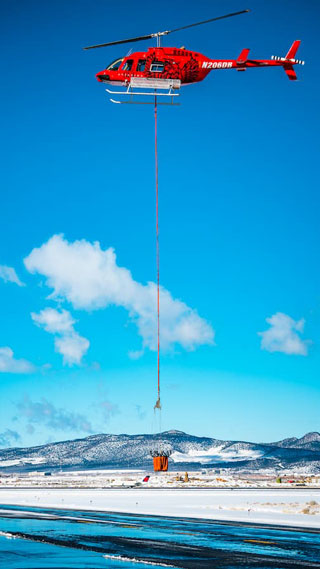 Why is Advanced Helicopter Training Important?
Why is Advanced Helicopter Training Important?
Having advanced training as a helicopter pilot comes with many benefits. You’ll be a safer, more confident pilot, you’ll have more experience, and you’ll probably have more job opportunities than you would without all this advanced training.
Employers value advanced training. The more advanced training you have as a pilot, the higher your chances are of getting a high-paying job in an industry you love. Pilots with advanced training are better assets for a company than pilots without this extra training. Employers like to know that their pilots are safe, well trained, and can react to any situation. When you get advanced training, you’ll be able to put these qualities on your resume and impress your future employer.
Getting advanced training is also a great way to build your flight hours. Building your flight hours is the most important thing you can do as a new pilot, and spending dozens of hours in the air learning these advanced skills will definitely get you closer to the 1,000 hours you need for a good paying helicopter pilot job.
So yes, getting advanced training as a pilot is important. Ultimately, it’s up to you whether or not you want to go through a program that offers this advanced training, but I definitely recommend finding a flight school that will give you as much advanced training as possible.
How Much Does Advanced Training Cost?
If you’re like most flight students, you want to get your pilot’s license for as little money as possible. Even though you may be able to find really cheap flight programs, you need to keep in mind that these programs probably won’t have the advanced training you need, give you very many flight hours, or fully prepare you for life as a helicopter pilot. Finding a program that balances price with quality should be your goal when researching flight schools.
As for how much advanced training costs, it really depends on the program and whether the training is offered as part of the standard curriculum or if it is offered only as an add-on course.
Often university flight schools offer advanced training as part of the regular curriculum. This means that every helicopter student will receive this training for no additional cost. It is simply part of the program. At SUU Aviation, all of this advanced training is part of the regular curriculum and you’ll receive this training for no extra cost.
Non-university flight schools are more likely to offer advanced training as add-on courses, or not as part of the regular program. This means you’ll have to pay more money to get this advanced training and will likely have to pay separately for each type of advanced training you want. This extra price can add up very quickly, especially if your goal is to get as much advanced training as possible. Most schools offer advanced training courses for $5,000-$12,000. Keep in mind that this price is for each individual course, not a total price.
It’s up to you whether you want to get advanced training through a university flight program or through a non-university one. University programs typically cost more because you’ll be paying for tuition on top of the price of the flight program, but you’ll get a degree with your license and advanced training will likely be part of the program. Non-university programs typically cost less than university ones, but you won’t automatically get this advanced training and you won’t have a degree with your license.
How Long Does Advanced Flight Training Take to Complete?
Again, the answer to this question depends on where you train and whether advanced training is already part of the program.
At a university flight school that includes advanced training as part of the curriculum, you’ll be getting advanced training while earning your pilot’s licenses and ratings. This means that it will probably take about two years to get all of this advanced training, or however long the entire program is.
At a non-university flight program, it will probably take a few days to a few weeks of intense training for each advanced course you take. A common length for many of the programs is between 10 and 30 hours of instruction per training course, spread out over several days.
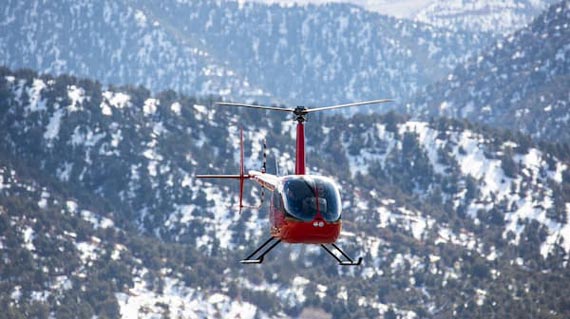 Where Can You Earn Advanced Flight Training?
Where Can You Earn Advanced Flight Training?
You’ll likely be able to get at least some of this advanced training at any university flight school and many non-university ones. A tiny local flight school is least likely to offer this training, but if you want to work as a pilot for a living, you should consider attending a larger program anyway. Most local flight programs are only prepared to help students earn a private pilot's license, and to work as a helicopter pilot you’ll need both private and commercial licenses, as well as an instrument rating.
SUU Aviation gives all students specific training in turbine transition, night vision goggles, external load, and mountain operations. And you’ll automatically get high altitude density training because this school is the highest altitude collegiate flight program in the country.
If you have any questions about how to get advanced training as a helicopter pilot, or to learn more about SUU Aviation’s program, feel free to contact them or come in for a tour.
Produced by SUU Aviation
The university's fleet includes 16 airplanes, 23 helicopters by the end of 2020, and state-of-the-art maintenance training facilities. SUU Aviation offers advanced and relevant flight training in the safest and most efficient way possible. The program continues to be on the cutting edge of the industry, training tomorrow's aviation leaders. With SUU Aviation, you’ll get a high-quality education and have the experience needed to get a job in the aviation industry.
This article was published more than 3 years ago and might contain outdated information or broken links. As a result, its accuracy cannot be guaranteed.
Tags: Aviation

